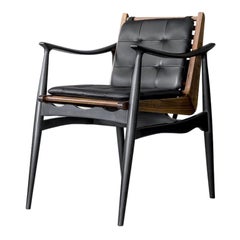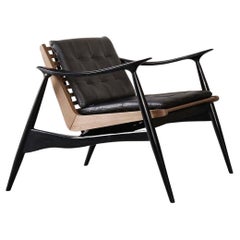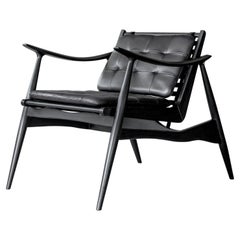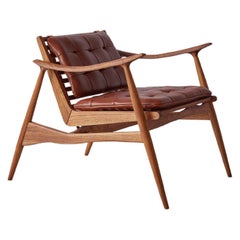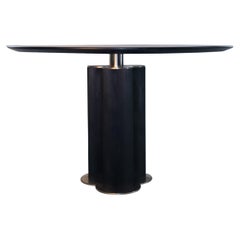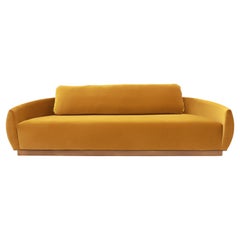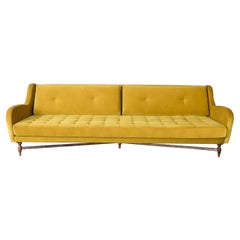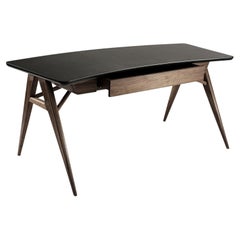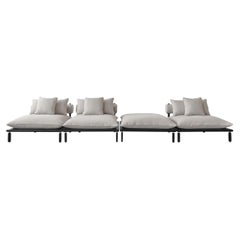Atra Form
2010s Mexican Post-Modern Dining Room Chairs
Leather, Mahogany, Walnut
2010s Mexican Post-Modern Lounge Chairs
Leather, Mahogany, Walnut
2010s Mexican Post-Modern Lounge Chairs
Leather, Mahogany, Walnut
2010s Mexican Post-Modern Lounge Chairs
Leather, Mahogany, Walnut
2010s Mexican Post-Modern Dining Room Tables
Brass
2010s Mexican Post-Modern Sofas
Brass
2010s Mexican Post-Modern Sofas
Fabric, Walnut
2010s Mexican Post-Modern Desks and Writing Tables
Wood
2010s Mexican Post-Modern Sofas
Fabric, Teak
2010s Mexican Post-Modern Lounge Chairs
Teak
2010s Mexican Post-Modern Sofas
Brass
2010s Mexican Post-Modern Desks and Writing Tables
Steel
2010s Mexican Post-Modern Sofas
Brass
2010s Mexican Post-Modern Sofas
Steel
2010s Mexican Post-Modern Cabinets
Brass, Steel
2010s Mexican Post-Modern Lounge Chairs
Brass
2010s Mexican Post-Modern Dining Room Tables
Brass, Steel
2010s Mexican Post-Modern Desks and Writing Tables
Marble, Brass
2010s Mexican Post-Modern Sofas
Steel
2010s Mexican Post-Modern Sofas
Brass
2010s Mexican Post-Modern Armchairs
Rattan, Mahogany
2010s Mexican Post-Modern Floor Lamps
Brass, Steel
2010s Mexican Post-Modern Sofas
Brass
2010s Mexican Post-Modern Sofas
Brass
2010s Mexican Post-Modern Sofas
Fabric, Walnut
2010s Mexican Post-Modern Dining Room Tables
Steel
2010s Mexican Post-Modern Coffee and Cocktail Tables
Marble, Steel
2010s Mexican Post-Modern Sofas
Brass
2010s Mexican Post-Modern Dining Room Tables
Marble, Brass
2010s Mexican Post-Modern Sofas
Brass
2010s Mexican Post-Modern Side Tables
Travertine, Brass
2010s Mexican Post-Modern Lounge Chairs
Brass
2010s Mexican Post-Modern Sofas
Fabric, Walnut
2010s Mexican Post-Modern Coffee and Cocktail Tables
Marble
2010s Mexican Post-Modern Lounge Chairs
Brass
2010s Mexican Post-Modern Dining Room Chairs
Fabric, Oak
2010s Mexican Post-Modern Dining Room Tables
Brass
2010s Mexican Post-Modern Sofas
Brass
2010s Mexican Post-Modern Sofas
Brass
2010s Mexican Post-Modern Night Stands
Walnut
2010s Mexican Post-Modern Stools
Steel
2010s Mexican Post-Modern Coffee and Cocktail Tables
Marble, Steel
2010s Mexican Post-Modern Dining Room Chairs
Rattan, Mahogany
2010s Mexican Post-Modern Lounge Chairs
Brass, Steel
2010s Mexican Post-Modern Dining Room Chairs
Leather, Mahogany
2010s Mexican Post-Modern Coffee and Cocktail Tables
Marble, Steel
2010s Mexican Post-Modern Dining Room Chairs
Leather, Mahogany
2010s Mexican Post-Modern Coffee and Cocktail Tables
Brass
2010s Mexican Post-Modern Dining Room Chairs
Leather, Mahogany
2010s Mexican Post-Modern Sofas
Fabric, Walnut
2010s Mexican Post-Modern Coffee and Cocktail Tables
Marble, Steel
2010s Mexican Post-Modern Console Tables
Brass
2010s Mexican Post-Modern Dining Room Chairs
Fabric, Mahogany
2010s Mexican Post-Modern Sofas
Brass
2010s Mexican Post-Modern Dining Room Chairs
Fabric, Walnut
2010s Mexican Post-Modern Sofas
Fabric, Teak
2010s Mexican Post-Modern Dining Room Tables
Stone, Marble, Brass
- 1
Atra Form For Sale on 1stDibs
How Much is a Atra Form?
ATRA for sale on 1stDibs
The work of architecture and design studio ATRA seamlessly blends the minimalist appeal of Scandinavian modernism with bold Mexican brutalism. Forever seeking to innovate, ATRA founder and creative director Alexander Díaz Andersson continues to embrace woodworking traditions while also working with marble, brass, travertine and more in the design of the studio’s side tables, desks, chairs and other furnishings.
Díaz Andersson was born and raised in Sweden. His Mexican mother and Swedish paternal grandparents worked in the furniture industry. He was naturally drawn to furniture design and architecture and was inspired by the Bauhaus, the clean lines attributed to the work of Finnish furniture designer Alvar Aalto, Italian architect-designer Carlo Scarpa’s building projects and the abstract creations of American sculptor Richard Serra.
After studying design at the European Institute of Design in Spain, Díaz Andersson moved to Mexico’s Yucatán Peninsula — where he became fascinated with the local history of woodworking. Impressed with the workmanship and drawn to Mexican furniture, he began to envision a way to marry their traditional construction techniques with modern furniture production technology.
Díaz Andersson opened ATRA in 2009 in Mexico City. The company’s first architectural commission was to design the Hejal — the holy Torah scrolls’ storage cabinet/altar — for the Birkat Itzjak Synagogue in Mexico City. The design was critically acclaimed and was the company’s watershed project, which launched their success as a prominent player in the design space.
ATRA’s Flow chair won a Gold A’Design Award in 2019. The studio has been featured in several design and architecture magazines, including Wallpaper, Architectural Digest and Surface.
On 1stDibs, find ATRA seating, tables, garden elements and more.
A Close Look at Post-modern Furniture
Postmodern design was a short-lived movement that manifested itself chiefly in Italy and the United States in the early 1980s. The characteristics of vintage postmodern furniture and other postmodern objects and decor for the home included loud-patterned, usually plastic surfaces; strange proportions, vibrant colors and weird angles; and a vague-at-best relationship between form and function.
ORIGINS OF POSTMODERN FURNITURE DESIGN
- Emerges during the 1960s; popularity explodes during the ’80s
- A reaction to prevailing conventions of modernism by mainly American architects
- Architect Robert Venturi critiques modern architecture in his Complexity and Contradiction in Architecture (1966)
- Theorist Charles Jencks, who championed architecture filled with allusions and cultural references, writes The Language of Post-Modern Architecture (1977)
- Italian design collective the Memphis Group, also known as Memphis Milano, meets for the first time (1980)
- Memphis collective debuts more than 50 objects and furnishings at Salone del Milano (1981)
- Interest in style declines, minimalism gains steam
CHARACTERISTICS OF POSTMODERN FURNITURE DESIGN
- Dizzying graphic patterns and an emphasis on loud, off-the-wall colors
- Use of plastic and laminates, glass, metal and marble; lacquered and painted wood
- Unconventional proportions and abundant ornamentation
- Playful nods to Art Deco and Pop art
POSTMODERN FURNITURE DESIGNERS TO KNOW
- Ettore Sottsass
- Robert Venturi
- Alessandro Mendini
- Michele de Lucchi
- Michael Graves
- Nathalie du Pasquier
VINTAGE POSTMODERN FURNITURE ON 1STDIBS
Critics derided postmodern design as a grandstanding bid for attention and nothing of consequence. Decades later, the fact that postmodernism still has the power to provoke thoughts, along with other reactions, proves they were not entirely correct.
Postmodern design began as an architectural critique. Starting in the 1960s, a small cadre of mainly American architects began to argue that modernism, once high-minded and even noble in its goals, had become stale, stagnant and blandly corporate. Later, in Milan, a cohort of creators led by Ettore Sottsass and Alessandro Mendini — a onetime mentor to Sottsass and a key figure in the Italian Radical movement — brought the discussion to bear on design.
Sottsass, an industrial designer, philosopher and provocateur, gathered a core group of young designers into a collective in 1980 they called Memphis. Members of the Memphis Group, which would come to include Martine Bedin, Michael Graves, Marco Zanini, Shiro Kuramata, Michele de Lucchi and Matteo Thun, saw design as a means of communication, and they wanted it to shout. That it did: The first Memphis collection appeared in 1981 in Milan and broke all the modernist taboos, embracing irony, kitsch, wild ornamentation and bad taste.
Memphis works remain icons of postmodernism: the Sottsass Casablanca bookcase, with its leopard-print plastic veneer; de Lucchi’s First chair, which has been described as having the look of an electronics component; Martine Bedin’s Super lamp: a pull-toy puppy on a power-cord leash. Even though it preceded the Memphis Group’s formal launch, Sottsass’s iconic Ultrafragola mirror — in its conspicuously curved plastic shell with radical pops of pink neon — proves striking in any space and embodies many of the collective’s postmodern ideals.
After the initial Memphis show caused an uproar, the postmodern movement within furniture and interior design quickly took off in America. (Memphis fell out of fashion when the Reagan era gave way to cool 1990’s minimalism.) The architect Robert Venturi had by then already begun a series of plywood chairs for Knoll Inc., with beefy, exaggerated silhouettes of traditional styles such as Queen Anne and Chippendale. In 1982, the new firm Swid Powell enlisted a group of top American architects, including Frank Gehry, Richard Meier, Stanley Tigerman and Venturi to create postmodern tableware in silver, ceramic and glass.
On 1stDibs, the vintage postmodern furniture collection includes chairs, coffee tables, sofas, decorative objects, table lamps and more.
